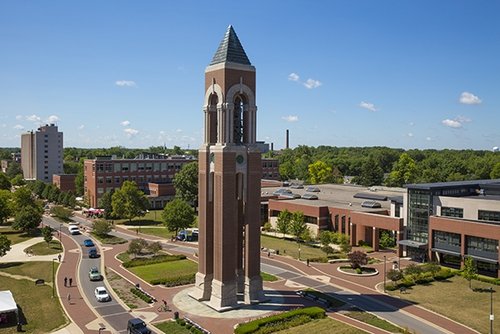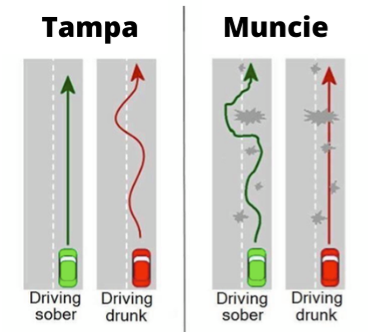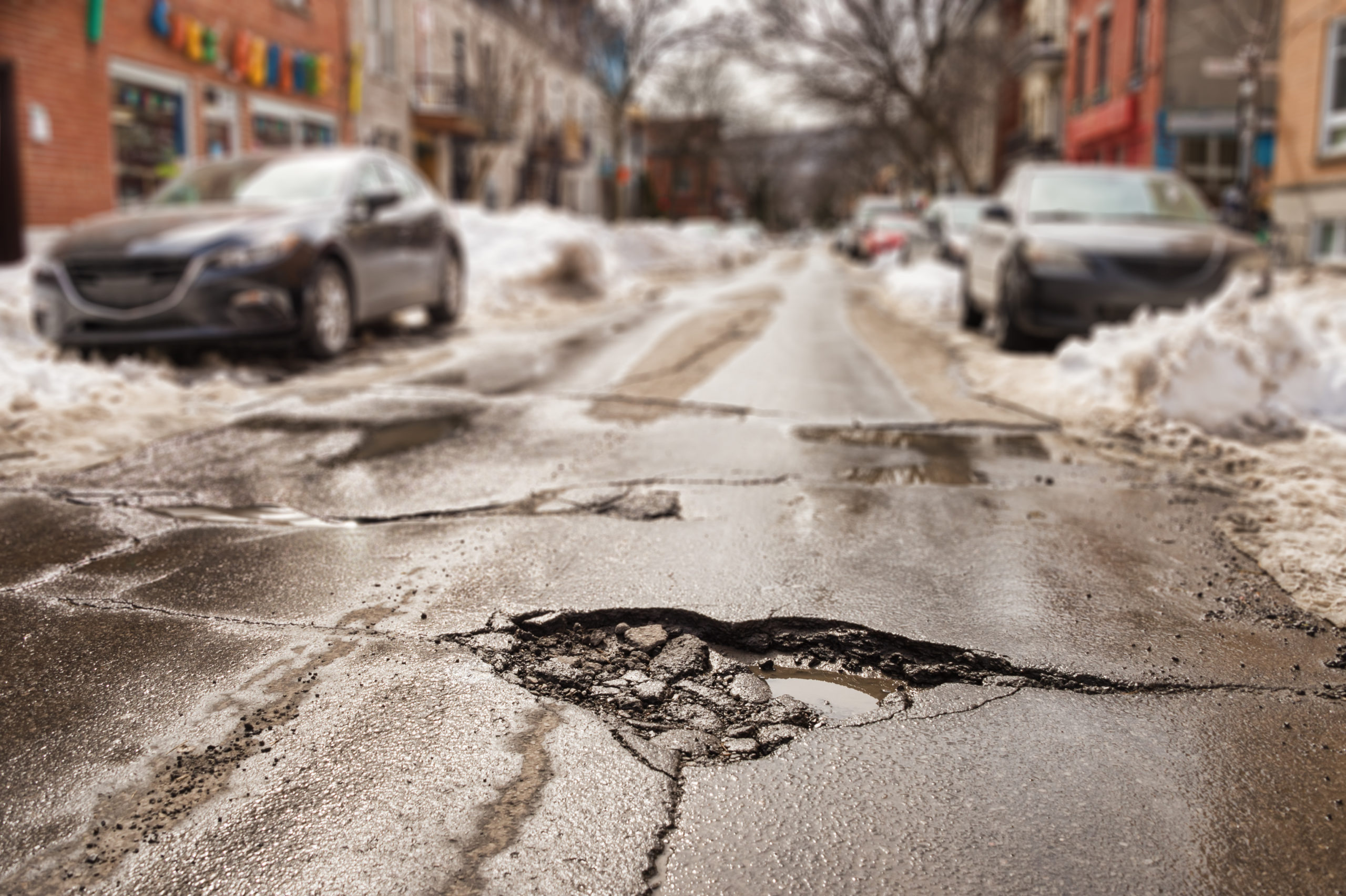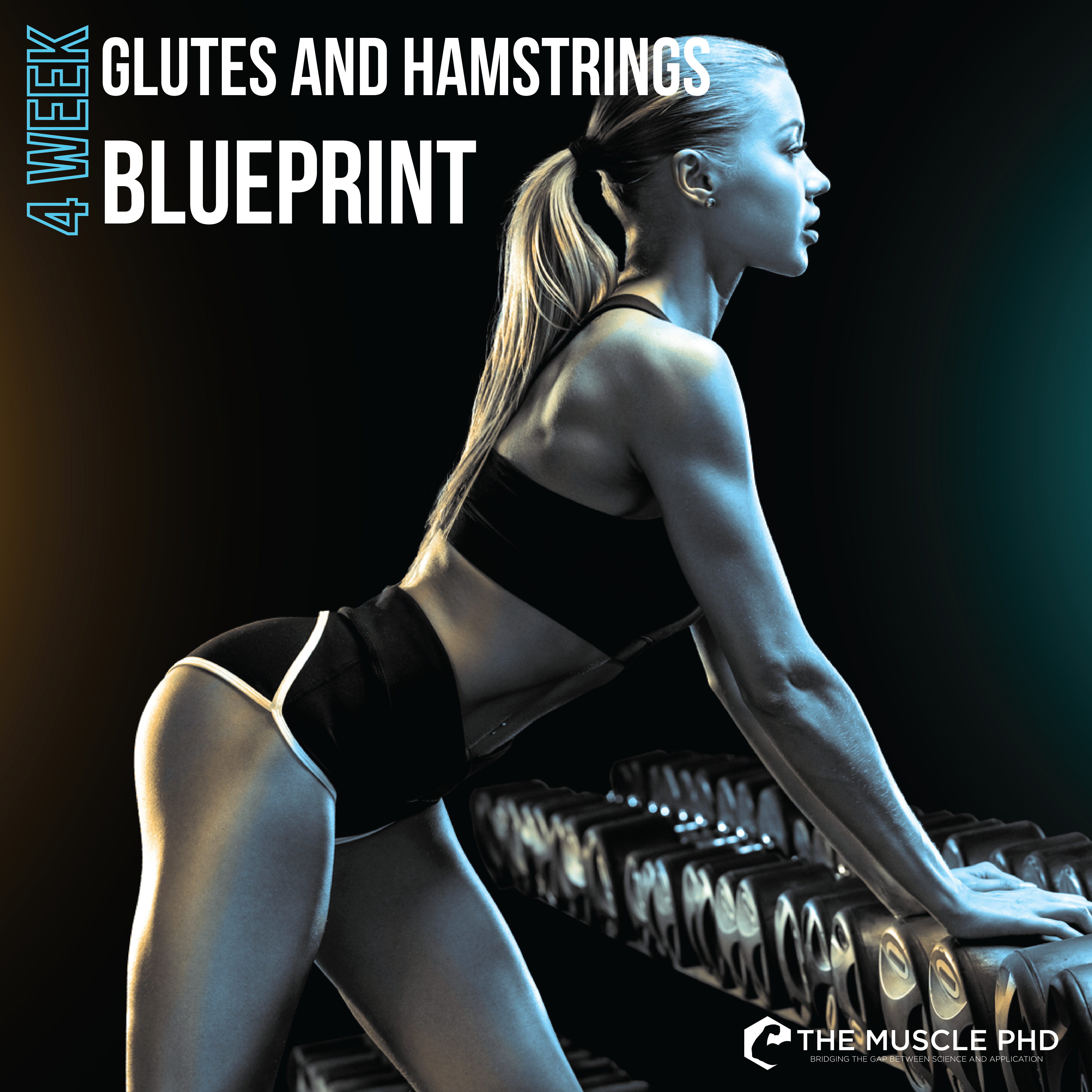Introduction
No, no, get your mind out of the gutter. The title of this refers to road imperfections. If you’re looking for information on a certain psychedelic plant or a slew of innuendos, you might be a little disappointed in this one.
Anyways.
 Ball State University is a well-known college in the Midwest. It is nationally renowned for its architecture, nursing, education, and journalism programs as well as its propensity for, uh, weekend get-togethers with large amounts of “fluid” consumption. For an Indiana school, Ball State has a pretty nice campus with several activity, food, and social offerings for students. Now, before this starts sounding like an ad for Ball State, we must warn you. Take one step off of Ball State campus and you’re in Muncie, IN.
Ball State University is a well-known college in the Midwest. It is nationally renowned for its architecture, nursing, education, and journalism programs as well as its propensity for, uh, weekend get-togethers with large amounts of “fluid” consumption. For an Indiana school, Ball State has a pretty nice campus with several activity, food, and social offerings for students. Now, before this starts sounding like an ad for Ball State, we must warn you. Take one step off of Ball State campus and you’re in Muncie, IN.
Muncie, and the general east-central Indiana area, aren’t exactly luxurious. The progression of time and removal of factory jobs has left many of these cities with fewer opportunities than their coastal cousins. Due to this, as of 2017, the average household income in Muncie was 24% lower than the Indiana state average and nearly 32% lower than the US average (Dept, 2017).
With this in mind, Muncie isn’t exactly the most prosperous city and, thus, has a serious pothole problem. In fact, there’s an entire Twitter page dedicated to potholes in Muncie (here). For those of you that live in warm climates (like us in Tampa, FL), potholes really aren’t a large concern and you might not even know how they appear. Potholes are mostly caused by fluctuations in temperate; the heat in summer can cause cracks in the roadway, but in winter, water can seep into these cracks and freeze. Once the water freezes, it expands. And bam! You have a pothole.
In fact, the pothole problem in Muncie is so bad that the city government will actually reimburse you if your car is damaged by a pothole. In 2014, the city was expected to pay about $28,000 to reimburse citizens for pothole-induced auto damage (Channel 13, 2014). I was one of these citizens in 2016; I had just bought a 2008 Mazdaspeed3 and ended up hitting a pothole the size of a water buffalo. The pothole shredded my tire and knocked my front bumper loose. You best believe I was at city hall bright-and-early the next morning.
Okay, so this was a bit of a ramble about a random Midwest city that no one’s ever heard of. How can we re-route this conversation back to bodybuilding?
Potholes in Bodybuilding
Potholes form on the road over time due to temperature fluctuations and general wear-and-tear. Just about every veteran bodybuilder or powerlifter would also agree that, over time, you pick up small nagging injuries. Every once in a while, you get hit with a big one; you tear a pec or get a bad tendon strain. There’s your huge pothole. Whatever rehab strategy you undergo, that muscle or joint will probably never be the same.
 Now, anyone who lives in an area with a ton of potholes knows this routine pretty well. When you’re driving on a pothole-infested road, you’re not going to drive in a straight line. You’re going to be dodge-duck-dip-dive-and… dodging potholes left and right. It’s going to have to be the same idea with training. Once you pick up a few minor bumps and bruises plus a big Bertha injury, training is going to have to change a little bit.
Now, anyone who lives in an area with a ton of potholes knows this routine pretty well. When you’re driving on a pothole-infested road, you’re not going to drive in a straight line. You’re going to be dodge-duck-dip-dive-and… dodging potholes left and right. It’s going to have to be the same idea with training. Once you pick up a few minor bumps and bruises plus a big Bertha injury, training is going to have to change a little bit.
As a newbie, your road to gains glory is pretty straight. Just step on the gas and go. But as you pick up those little (and big) pothole injuries, now you’re going to have to drive a little more careful. Keep your eye on the road. Drive around the potholes rather than through them. If you’re able to maneuver around those potholes, you’re in the clear. If you drive into one, you’re gonna have a bad time.
Conclusion
Making significant gains in the long term requires smart planning. This plan is much like a road map – if you have a specific goal in mind, your roadmap helps you achieve that goal. However, as a veteran, your roadmap is going to be sprinkled with potholes of various sizes. Therefore, find ways to alter your roadmap in order to work around these boo-boos.
Do squats bother your cranky knees? Find a quad exercise that doesn’t bug your knees. Bench press aggravate your old shoulder injury? Try grabbing a pair of dumbbells instead. Burpees hurt your lower back? Just stop doing burpees and go do curls instead. Burpees suck.
You guys get the point, though. Just because the internet tells you that the squat and bench press are the kings of lifts doesn’t mean that you have to do them. Your training plan should be tailored to your goals and needs, and one of the factors that goes into this is your injury history. Don’t be afraid to substitute movements that aren’t as “cool looking” in order to stay pain free. Never emphasize short term gains over long term progress.
Keep Growing.
References
From being a mediocre athlete, to professional powerlifter and strength coach, and now to researcher and writer, Charlie combines education and experience in the effort to help Bridge the Gap Between Science and Application. Charlie performs double duty by being the Content Manager for The Muscle PhD as well as the Director of Human Performance at the Applied Science and Performance Institute in Tampa, FL. To appease the nerds, Charlie is a PhD candidate in Human Performance with a master’s degree in Kinesiology and a bachelor’s degree in Exercise Science. For more alphabet soup, Charlie is also a Certified Strength and Conditioning Specialist (CSCS), an ACSM-certified Exercise Physiologist (ACSM-EP), and a USA Weightlifting-certified performance coach (USAW).




